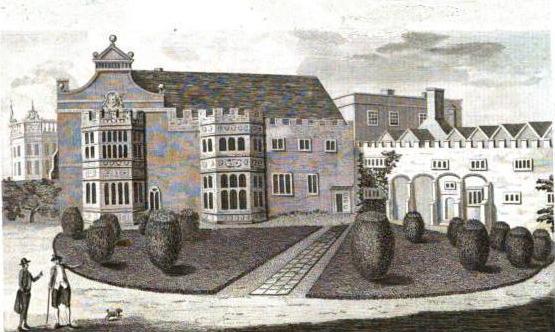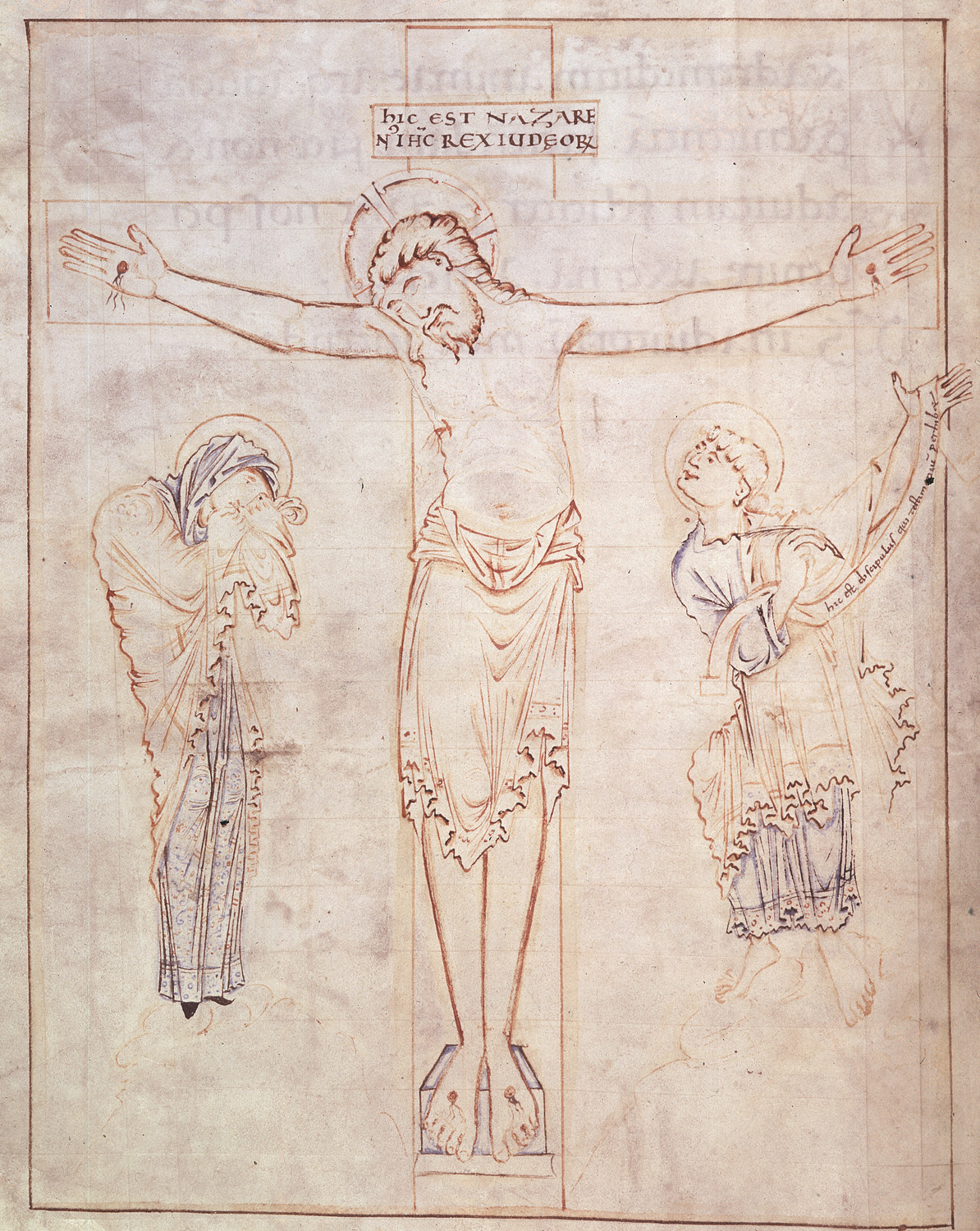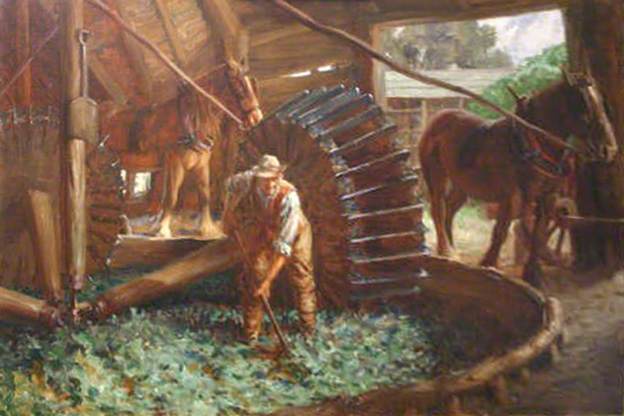|
Henry Williams (alias Cromwell)
Sir Henry Williams (1537 – 6 January 1604), also known as Sir Henry Cromwell, was a knight of the shire ( MP) for Huntingdonshire during the reign of Elizabeth I. He was the grandfather of the Protector, Oliver Cromwell. Early life Sir Henry Williams, alias Cromwell, was of Welsh descent, the eldest son and heir of Sir Richard Williams (–1544) and Frances (–), daughter of Thomas Murfyn. His grandfather, Morgan ap William, was the son of a man named William, and also used the name Williams, but his father abandoned the Welsh patronymic system completely and adopted the name of Cromwell, in honour of an uncle Thomas Cromwell, 1st Earl of Essex. The family then consistently used and wrote its name as "Williams, alias Cromwell", well into the 17th century. explains the reason for Sir Richard Williams, the great grandfather of Oliver Cromwell, changing his name, from Williams to Cromwell:"Henry VIII strongly recommended it to the Welsh (whom he incorporated with the Engli ... [...More Info...] [...Related Items...] OR: [Wikipedia] [Google] [Baidu] |
Oliver Cromwell
Oliver Cromwell (25 April 15993 September 1658) was an English politician and military officer who is widely regarded as one of the most important statesmen in English history. He came to prominence during the 1639 to 1651 Wars of the Three Kingdoms, first as a senior commander in the Parliamentarian army and then as a politician. A leading advocate of the execution of Charles I in January 1649, which led to the establishment of the Republican Commonwealth of England, Scotland and Ireland, he ruled as Lord Protector from December 1653 until his death in September 1658. Cromwell nevertheless remains a deeply controversial figure in both Britain and Ireland, due to his use of the military to first acquire, then retain political power, and the brutality of his 1649 Irish campaign. Educated at Sidney Sussex College, Cambridge, Cromwell was elected MP for Huntingdon in 1628, but the first 40 years of his life were undistinguished and at one point he contemplated emigrati ... [...More Info...] [...Related Items...] OR: [Wikipedia] [Google] [Baidu] |
The Honourable
''The Honourable'' (British English) or ''The Honorable'' (American English; American and British English spelling differences#-our, -or, see spelling differences) (abbreviation: ''Hon.'', ''Hon'ble'', or variations) is an honorific Style (manner of address), style that is used as a prefix before the names or titles of certain people, usually with official governmental or diplomatic positions. Use by governments International diplomacy In international diplomatic relations, representatives of foreign states are often styled as ''The Honourable''. Deputy chiefs of mission, , consuls-general and consuls are always given the style. All heads of consular posts, whether they are honorary or career postholders, are accorded the style according to the State Department of the United States. However, the style ''Excellency'' instead of ''The Honourable'' is used for ambassadors and high commissioners. Africa The Congo In the Democratic Republic of the Congo, the prefix 'Honourable' o ... [...More Info...] [...Related Items...] OR: [Wikipedia] [Google] [Baidu] |
Knight Bachelor
The title of Knight Bachelor is the basic rank granted to a man who has been knighted by the monarch but not inducted as a member of one of the organised orders of chivalry; it is a part of the British honours system. Knights Bachelor are the most ancient sort of British knight (the rank existed during the 13th-century reign of King Henry III), but Knights Bachelor rank below knights of chivalric orders. A man who is knighted is formally addressed as " Sir irst Name urname or "Sir irst Name and his wife as "Lady urname. Criteria Knighthood is usually conferred for public service; amongst its recipients are all male judges of His Majesty's High Court of Justice in England. It is possible to be a Knight Bachelor and a junior member of an order of chivalry without being a knight of that order; this situation has become rather common, especially among those recognized for achievements in entertainment. For instance, Sir Michael Gambon, Sir Derek Jacobi, Sir Anthony Hopkins ... [...More Info...] [...Related Items...] OR: [Wikipedia] [Google] [Baidu] |
Mark Noble (biographer)
Mark Noble (1754–1827) was an English clergyman, biographer and antiquary. Life He was born in Digbeth, Birmingham, the third surviving son of William Heatley Noble, a merchant there. His father sold, among many other commodities, beads, knives, toys, and other trifles which he distributed wholesale among slave traders, and he had also a large mill for rolling silver and for plating purposes. Mark was educated at schools at Yardley, Worcestershire, and Ashbourne, Derbyshire. On the death of his father he inherited a modest fortune, and was articled to Mr. Barber, a solicitor of Birmingham. On the expiration of his indentures he went into business on his own account; but turned to literature and history. In 1781 he was ordained to the curacies of Baddesley Clinton and Packwood, Warwickshire. On the sudden death of the incumbent, Noble was himself presented to the two livings ('starvations,' he called them). Noble, now a married man, took a house at Knowle, Warwickshire, co ... [...More Info...] [...Related Items...] OR: [Wikipedia] [Google] [Baidu] |
Ramsey, Cambridgeshire
Ramsey is a market town and civil parish in the Huntingdonshire district of Cambridgeshire, England. The town is about north of Huntingdon. Ramsey parish includes the settlements of Ramsey Forty Foot, Ramsey Heights, Ramsey Mereside, Ramsey Hollow and Ramsey St Mary's. The town grew up around Ramsey Abbey, an important Benedictine monastery. In the order of precedence for abbots in Parliament, Ramsey was third after Glastonbury and St Albans. The town manor is built on the site of (and using materials from) the ancient Abbey and is the seat of the Lords de Ramsey, major landowners in Lincolnshire and Cambridgeshire. The remains of the Abbey are now home to part of the town's secondary school. Abbey College, Ramsey resulted from the amalgamation of the previous two secondary schools, Ailwyn School and Ramsey Abbey School. History Besides a Palaeolithic axe discovered in Victoria Road and seen as a chance glacial find, there is no record of prehistoric finds from the town. ... [...More Info...] [...Related Items...] OR: [Wikipedia] [Google] [Baidu] |
Ramsey Abbey
Ramsey Abbey was a Benedictine abbey in Ramsey, Huntingdonshire (now part of Cambridgeshire), England. It was founded about AD 969 and dissolved in 1539. The site of the abbey in Ramsey is now a Scheduled Ancient Monument. Most of the abbey's buildings were demolished after the dissolution but surviving structures are Grade I and Grade II* listed buildings. Ramsey Abbey Gatehouse is in the care of the National Trust and the Church of St Thomas à Becket, Ramsey was one of the buildings of the abbey. The Abbey Ramsey Abbey was founded in 969 by Oswald, Bishop of Worcester on land donated by Æthelwine, Ealdorman of East Anglia (Earl Ailwyn), where he had already built a wooden chapel for three monks. The foundation was part of the mid-10th century English Benedictine reform, in which Ely and Peterborough were also refounded. Æthelwine gave the new foundation properties including an estate at nearby Bodsey and Houghton Mill. The Frankish scholar Abbo of Fleury came to Ra ... [...More Info...] [...Related Items...] OR: [Wikipedia] [Google] [Baidu] |
Huntingdonshire
Huntingdonshire (; abbreviated Hunts) is a non-metropolitan district of Cambridgeshire and a historic county of England. The district council is based in Huntingdon. Other towns include St Ives, Godmanchester, St Neots and Ramsey. The population was 180,800 at the 2021 Census. History The area corresponding to modern Huntingdonshire was first delimited in Anglo-Saxon times. Its boundaries have remained largely unchanged since the 10th century, although it lost its historic county status in 1974. On his accession in 1154 Henry II declared all Huntingdonshire a forest. H. R. Loyn, ''Anglo-Saxon England and the Norman Conquest'' 2nd ed. 1991, pp. 378–382. Status In 1889, under the Local Government Act 1888 Huntingdonshire became an administrative county, with the newly-formed Huntingdonshire County Council taking over administrative functions from the Quarter Sessions. The area in the north of the county forming part of the municipal borough of Peterborough becam ... [...More Info...] [...Related Items...] OR: [Wikipedia] [Google] [Baidu] |
North Front Of Hinchinbrook
North is one of the four compass points or cardinal directions. It is the opposite of south and is perpendicular to east and west. ''North'' is a noun, adjective, or adverb indicating direction or geography. Etymology The word ''north'' is related to the Old High German ''nord'', both descending from the Proto-Indo-European unit *''ner-'', meaning "left; below" as north is to left when facing the rising sun. Similarly, the other cardinal directions are also related to the sun's position. The Latin word ''borealis'' comes from the Greek '' boreas'' "north wind, north", which, according to Ovid, was personified as the wind-god Boreas, the father of Calais and Zetes. ''Septentrionalis'' is from ''septentriones'', "the seven plow oxen", a name of ''Ursa Major''. The Greek ἀρκτικός (''arktikós'') is named for the same constellation, and is the source of the English word ''Arctic''. Other languages have other derivations. For example, in Lezgian, ''kefer'' can mean ... [...More Info...] [...Related Items...] OR: [Wikipedia] [Google] [Baidu] |
Parson Drove
Parson Drove is a fen village in the Isle of Ely, Cambridgeshire, England. A linear settlement, it is west of Wisbech, the nearest town. The village is named after the central thoroughfare along which the village developed, a green drove, much wider than the current metalled road (B1166). The population at the 2001 Census was 1,030. The population is included in the civil parish of Wisbech St Mary. The city of Peterborough, is to the west, and the town of King's Lynn, to the east. History The area was farmed by the Romans, who left evidence of their presence in several places throughout Parson Drove and the surrounding parish. Samuel Pepys wrote about Parson Drove in his diary for 17 September 1663, describing it as a "heathen place" where he found his uncle and aunt in a "sad poor thatched cottage", after which he took them to a "miserable inn" (the Swan Inn), where he was staying, and where his uncle's horse was subsequently stolen. A lawyer's clerk from London was, by hi ... [...More Info...] [...Related Items...] OR: [Wikipedia] [Google] [Baidu] |
The Fens
The Fens, also known as the , in eastern England are a naturally marshy region supporting a rich ecology and numerous species. Most of the fens were drained centuries ago, resulting in a flat, dry, low-lying agricultural region supported by a system of drainage channels and man-made rivers (Ditch, dykes and drains) and automated pumping stations. There have been unintended consequences to this reclamation, as the land level has continued to sink and the dykes have been built higher to protect it from flooding. Fen is the local term for an individual area of marshland or former marshland. It also designates the type of marsh typical of the area, which has pH, neutral or alkaline water and relatively large quantities of dissolved minerals, but few other plant nutrition, plant nutrients. The Fens are a National Character Area, based on their landscape, biodiversity, geodiversity and economic activity. The Fens lie inland of the Wash, and are an area of nearly in Lincolnshire, ... [...More Info...] [...Related Items...] OR: [Wikipedia] [Google] [Baidu] |
Sheriff Of Cambridgeshire And Huntingdonshire
This is an ''incomplete'' list of Sheriffs of Cambridgeshire and Huntingdonshire in England from 1154 until the abolition of the office in 1965. Exceptionally, the two counties shared a single sheriff. Sheriffs had a one-year term of office, being appointed at a meeting of the privy council generally held in February or March and holding office until the similar meeting in the next year.Sheriffs Act 1887 c.55 s.32 In 1648 it became the practice to rotate the office between inhabitants of Cambridgeshire proper, the Isle of Ely and Huntingdonshire. This was done in a three-year cycle, with an inhabitant of each area occupying the office in turn. Note: the years shown are the date of commencement of the sheriff's year of office. For example, the high sheriff appointed in March 1892 "for the year 1892" held office until March 1893. Before 1200 *Before 1154 – See High Sheriff of Cambridgeshire *1154: Richard Basset and Aubrey de Vere *1155–1161: Payn and Robert Grimball *1 ... [...More Info...] [...Related Items...] OR: [Wikipedia] [Google] [Baidu] |








